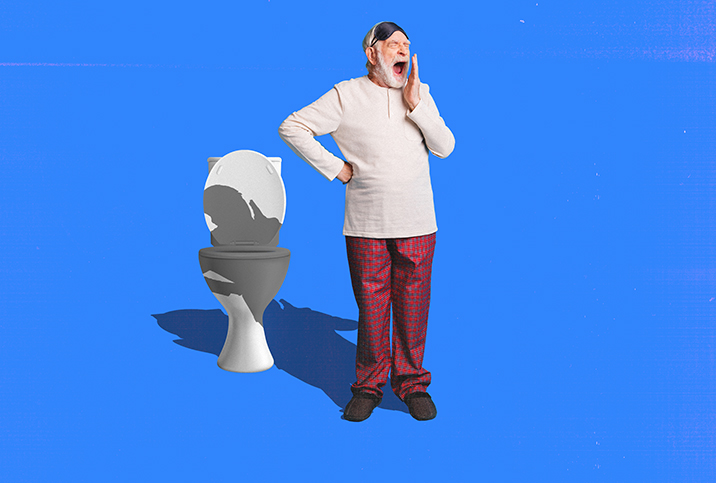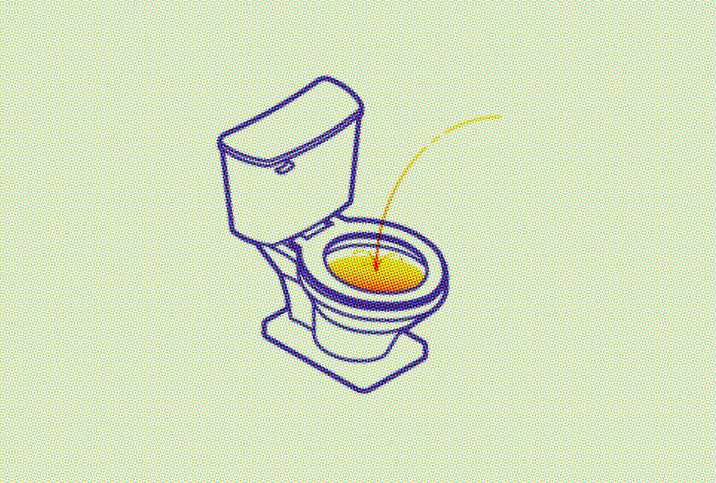Sacral Neuromodulation May Help Your Overactive Bladder

Do you find yourself frequently running to the bathroom to pee? Are medications and physical therapy not helping? If so, you may be a candidate for sacral neuromodulation (SNM), also known as sacral nerve stimulation, a safe and minimally invasive procedure that treats symptoms of an overactive bladder in both men and women.
"It's like a pacemaker for the bladder in that it's composed of a little wire and that's attached to a small, little battery that sits under the skin," said Raveen Syan, M.D., an assistant professor of clinical urology at the University of Miami Miller School of Medicine. "You won't see anything. If you press hard on your buttock, you can feel the battery."
The little wire is located near the sacral nerves at the back of the pelvis and emits electrical pulses that deliver a signal to the nerves. The signal essentially overrides the bad habits the bladder has developed. If you had an irregular heartbeat, you'd get a pacemaker to pace your heart at a healthier pace. That's basically what SNM does to the bladder nerves.
"It's modulating signals back to the brain," Syan said.
She gave the example of someone with an overactive bladder having to pee with just a small amount of urine in their bladder, an amount someone without the condition would be able to hold with no problem.
"A person with an overactive bladder is sensing that small amount of volume as too much volume: 'I cannot hold it. I must pee now,'" Syan said. "You can think of it as an inappropriate sensation, so [SNM] can modulate that. The electrostimulation, you don't feel. It's happening at a level where you're not feeling any discomfort or sensation from it, but it's working on the bladder."
Sacral neuromodulation is more than 90 percent effective in treating an overactive bladder. This therapy is also used to treat fecal incontinence (it's about 90 percent effective), and underactive bladder and pelvic pain (about 70 percent effective), Syan noted.
Try it out first
One of the nice things about SNM is you can try it before you go through with the implantation, "kind of like test-driving a car," said Kelly Casperson, M.D., a urologist at Pacific Northwest Urology Specialists in Bellingham, Washington.
"You try it for a week before you ever get anything permanently done," Casperson said. "It's almost like a completely reversible surgery. We don't have a lot of reversible surgeries."
A nerve evaluation is done in the clinic. Syan said she tells her patients it's like visiting a dentist.
"It's not comfortable, but it's completely bearable and the discomfort is only for a few minutes," she said. "We use numbing medication to numb up the whole back area near the tailbone."
The numbing medication is the worst part because it can sting and burn, she said. Once that's done, the patient shouldn't feel any pain, just pressure.
"We thread two little wires, like dental floss, on either side, so both the left and the right nerve," Syan explained. "These wires stick out of your skin—these are needle pokes only—and they're attached to a temporary battery."
During the temporary trial phase, you can walk around and live your life. You can climb stairs, work and drive. You can do just about everything you normally do; just don't go scuba diving. And avoid heavy exercise so the wires don't move.
The device is covered with a waterproof dressing, but you will still want to shower carefully so it doesn't get wet.
"When we see you back in a week, you have to be at least 50 percent better or your insurance won't even cover the permanent one," Casperson said.
Most of Casperson's patients are 70 percent to 80 percent better in terms of their urinary symptoms, including the number of leaks, incontinence pads used and urinations per day, as well as how well the bladder is emptying.
If you have at least a 50 percent improvement in your urinary symptoms, the device is going to work great for you, Syan said.
"Then you have the option of going to the operating room and getting the device placed," Syan said. "We do it in the operating room because it's uncomfortable when you're awake. However, it's not a real operation. It's just mild sedation, like a colonoscopy. It's all skin work."
Side effects and risks
The battery has rechargeable and non-rechargeable versions. The rechargeable one is smaller, so it's great for thinner patients, Casperson said.
"They don't really feel anything underneath the skin," she said.
The rechargeable battery needs to be recharged every two weeks, while the non-rechargeable one has a life span of more than 10 years.
The side effects and complication risks of the SNM procedure are minimal. There's no risk of bleeding, and there's a low risk of infection (about 3 percent), Syan said. However, the device's wiring may move or the battery may die over time.
"At some point, if you live decades beyond the device placement, you'll probably need to get the battery changed," Syan said. "It's just a simple, minor procedure."
You can adjust settings on the device, increasing or decreasing the strength of the stimulation. It's composed of different electrodes, stimulating the nerve at different points.
"You can kind of think of this device as it has the ability to age with you," Syan said. "As your body changes, you can use the same device and adjust it to basically respond to the changes your body has."
Many patients do not have to make regular adjustments, though, Casperson said.
"We set it to where it works and then leave it alone," she said. "A lot of people think of this as, 'Oh, I want to push a button when I want to pee.' That's not how it is at all. You're still going to get a sensation to urinate. You're still going to urinate. The controller is really to turn it off if you're going to get an MRI or go up on the stimulation if you need more stimulation. But it's not something that you're actively managing like a video game every day."


















